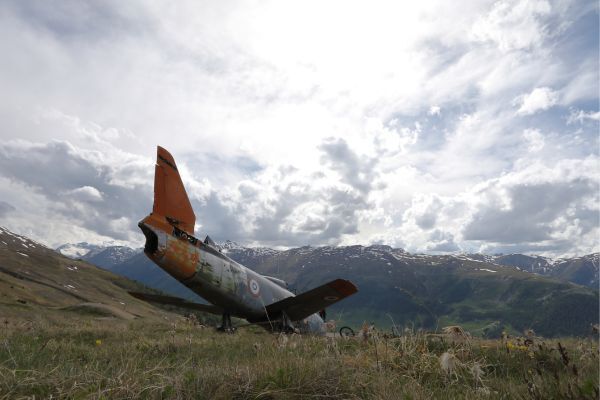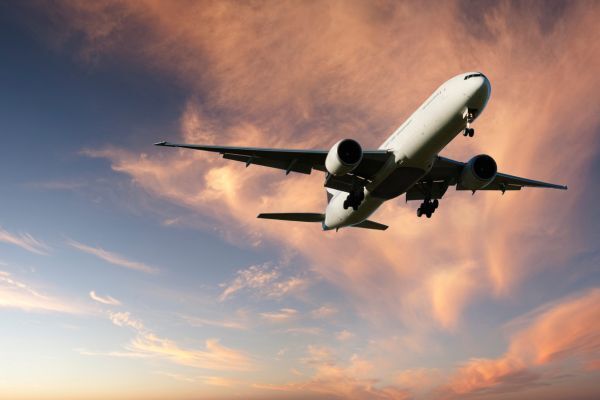According to recent research, about 84 aircraft have been missing since 1948. After boundless searches, only 50% of them were found. Based on data collected by the Aviation safety network, the missing airplanes were able to accommodate over a dozen passengers.
But despite so many advancements, terrible air accidents and the mysterious vanishing of airplanes still happen. Let’s dive into the mystery of missing airplanes.
3 Mysteries Behind Missing Airplanes
The mysteries of missing airplanes have always captivated the attention of all people; it appears that we have learned about the end of the world, but there are still certain secrets that are unknown. So, let us learn about those mysteries. Let’s begin!
1. Bermuda Triangle ( Mystery behind Missing Airplanes )

The Bermuda Triangle is one of history’s greatest mysteries. It is a small section of the North Atlantic Ocean, which has engulfed more than 50 ships and 20 airplanes. It is also known as the devil’s triangle.
Some people believe that the Incidents may have been caused by sudden changes in the weather, undersea terrain, and methane hydrate eruptions.
Due to its location along important air and sea routes, sudden and severe weather changes, including intense storms and water spouts, are frequent in this area.
Here are some logical reasons behind the mystery of the Bermuda Triangle:
- Weather and ecological factors
- Mechanical and equipment failures
- Human errors and navigation challenges
2. The Greatest Aviation Mystery of all time: MH370
Acceptedly, It is an unsolved mystery. It was a 40-minute flight from Kuala Lumpur to Beijing, but suddenly it vanished from the radar screens and all 239 of the passengers and crew vanished without a trace.
However, there is still an urgent requirement to find the secrets of missing airplanes. Even more troubling than the fact that cutting-edge airliners could vanish so completely from the face of the planet.
Authorities were given millions of dollars to search where the 200-foot-long aircraft must have gone.
3. Egypt Air Flight 990
Flight 990 took off from Los Angeles and continued to fly towards Cairo. It is believed that due to some mechanical issues, this flight crashed into the Atlantic Ocean, killing roughly 217 passengers.
However, the NTSB determined that there was no mechanical failure in the aircraft. Furthermore, even if a breakdown occurred, there was adequate time and reciprocal operations to bring the aircraft out of the dive.
While EgyptAir management opposed the results, the NTSB found that the aircraft crashed as a result of flight inputs from the relief first officer.
Common Causes of Plane Crashes

There are several reasons for aircraft accidents. Understanding what causes a plane to crash often requires extensive research and analysis. Here are some of the reasons stated below:
1. Aviation Human Errors:
- Flying when high on drugs or booze.
- When employing automatic flight systems, there is some confusion.
- Inadequate training for pilots and flying crew.
2. Negligence on the Part of an Air Traffic Controller:
- Failure to report a hazard.
- Failure to handle air traffic properly.
- Failure to respond appropriately to a hanging emergency
3. Inadequate Aircraft Maintenance:
- Variations in electrical wiring.
- Incorrect installation of components.
- Insufficient lubrication
4. Defects in aircraft design:
- Manufacturer flaws
- Weld failures
- Improper material selection
Sufficient Measures Taken by the Indian Government to Avoid Air Mishaps
To prevent air mishaps in the country, the government has implemented a variety of procedures, including data analysis of aircraft accidents/incidents and operator audits, among others, as part of its accident prevention program.
The actions taken by the government to guarantee passenger safety include:
The implementation of recommendations resulting from investigations of aircraft accidents and incidents, as well as the dissemination of safety information among operators, pilots, engineers, and air traffic controllers.
Additionally, flight operations inspectors conduct regular surveillance of various operators, like doing a regulatory audit of operators and maintenance organizations.
Except this, the government has formed several Committees of Inquiry following the requirements of the Aircraft Rules 2012 to examine aircraft accidents on a case-by-case basis.
How has technology improved flight safety?

Aircraft have become increasingly safer and more efficient as technology has advanced. Many technical advances have been made to increase airplane safety, ranging from onboard sensors that monitor the aircraft’s health to new materials that make the aircraft more durable. Let’s have a look at some of these inventions
1. Artificial Intelligence:
AI-powered devices can monitor the health of airplanes in real-time. They can predict when components may break using sensors and data analytics, allowing for preventive maintenance.
This not only decreases the danger of in-flight problems but also saves aircraft downtime, eventually boosting safety.
2. Systems for Automatic Flight Control:
AFCS are used to enhance the aircraft’s fundamental flying qualities (e.g., to offer dynamic stability even if the aircraft was meant to be statically unstable) or to increase the aircraft’s basic performance in certain atmospheric conditions.
3. Automated Weather Prediction System:
Accurate weather prediction systems in the TMA help airplanes avoid hazardous weather conditions such as turbulence and storms, which may cause flight plan modifications.
4. Ground Proximity Warning System Upgrade:
The Enhanced Ground Proximity Warning System (EGPWS) decreases the danger of controlled flight into terrain by providing flight crews with fast, precise information about terrain and obstructions in the region.
The technology predicts and warns flight crews of approaching collisions with obstacles or terrain based on multiple aircraft inputs and an internal database.
5. Electronic flight bags:
EFBs improve safety and crew access to operating procedures and flight management information. They also improve safety by allowing aircrews to properly calculate aircraft performance for safer departures and arrivals, as well as aircraft weight and balance for loading-planning purposes.
Conclusion:
The mystery of missing airplanes continues to captivate our collective imagination, reminding us that, despite technological breakthroughs, certain events remain unexplainable.
While some incidents, such as Flight MH370, remain unsolved, others, like Air France Flight 447, have revealed answers through extensive research. These tragic events serve as a reminder of the uncertainty of aviation and the importance of continuing efforts to improve safety and security in the sky.





